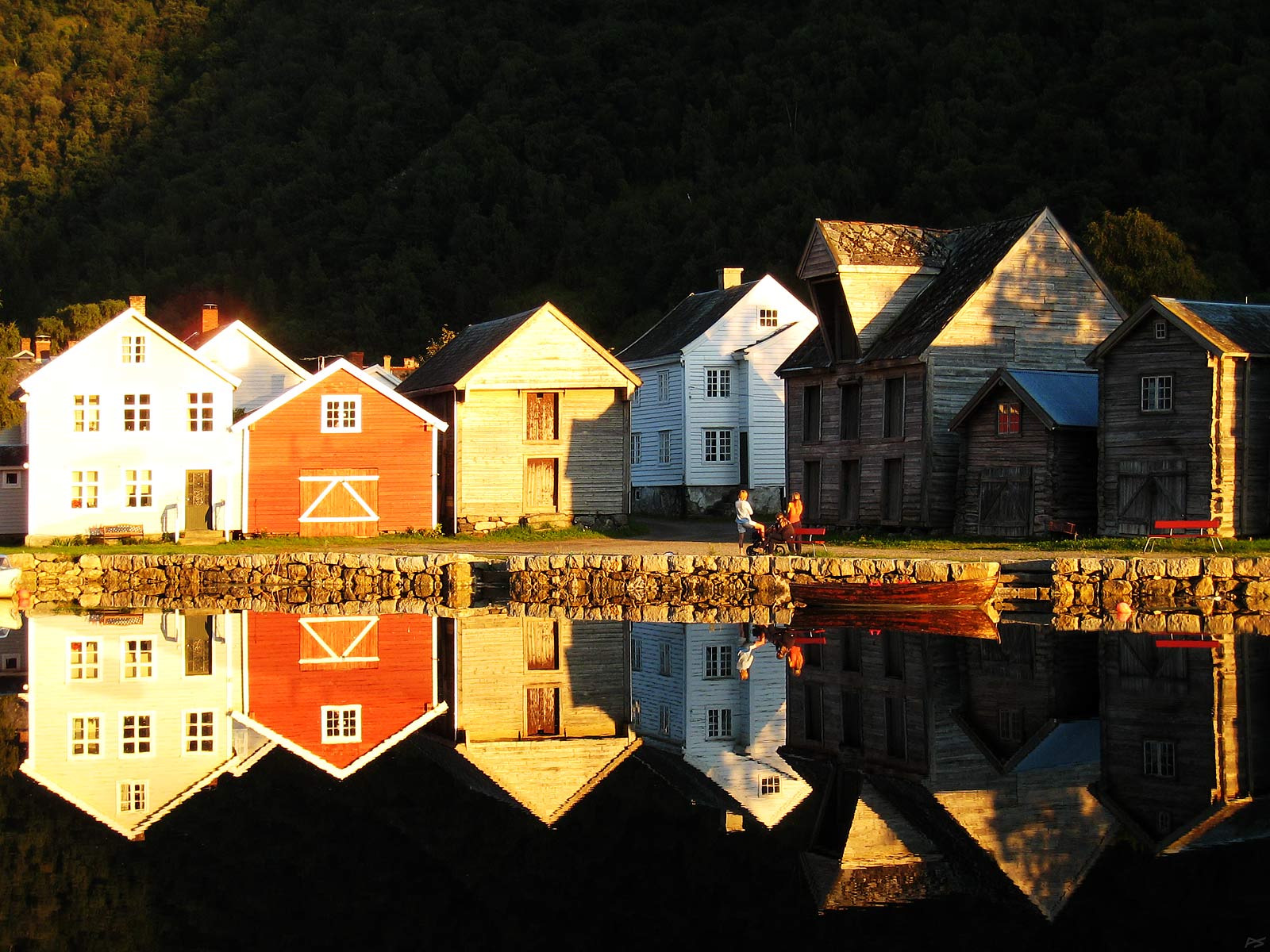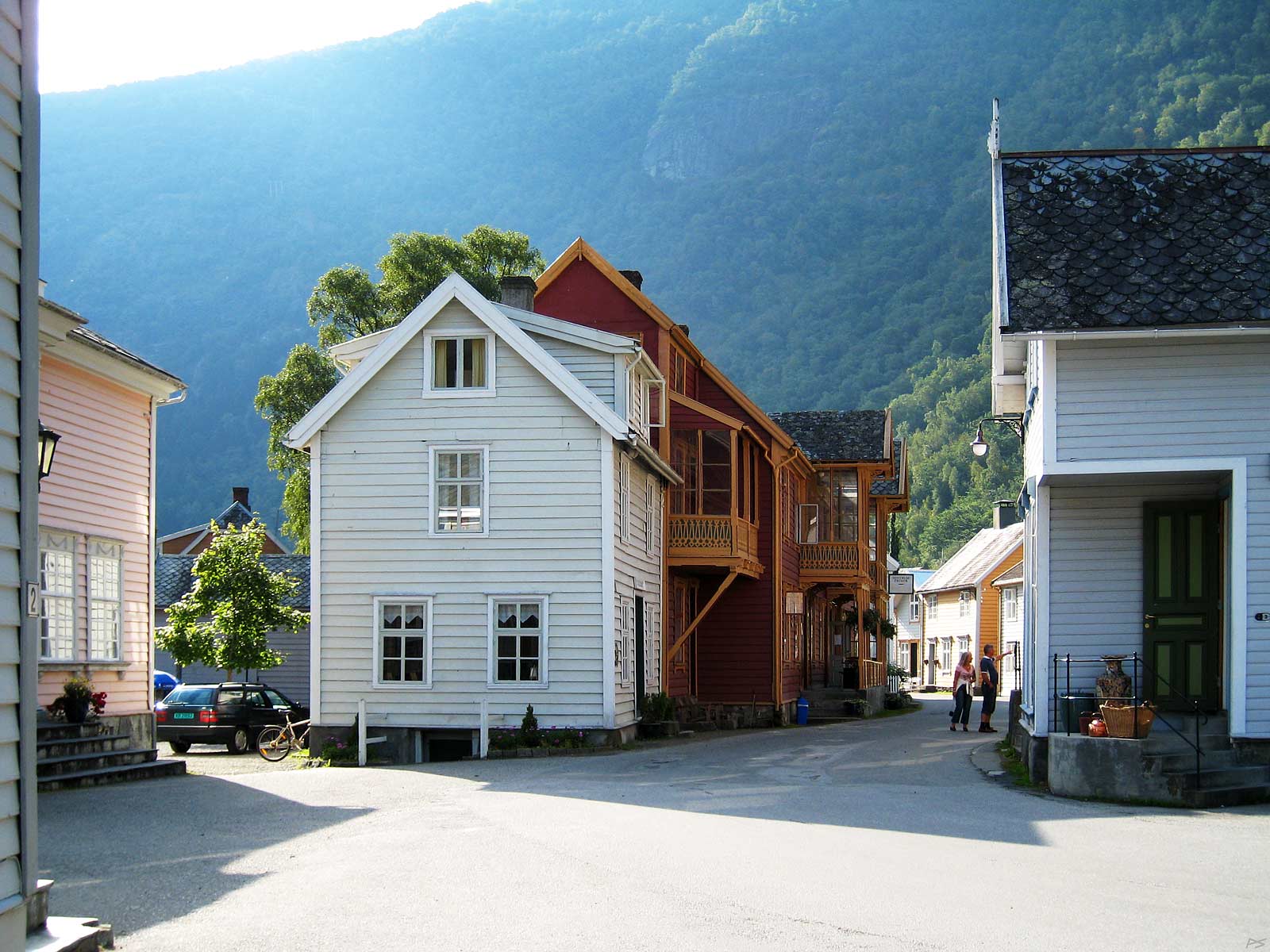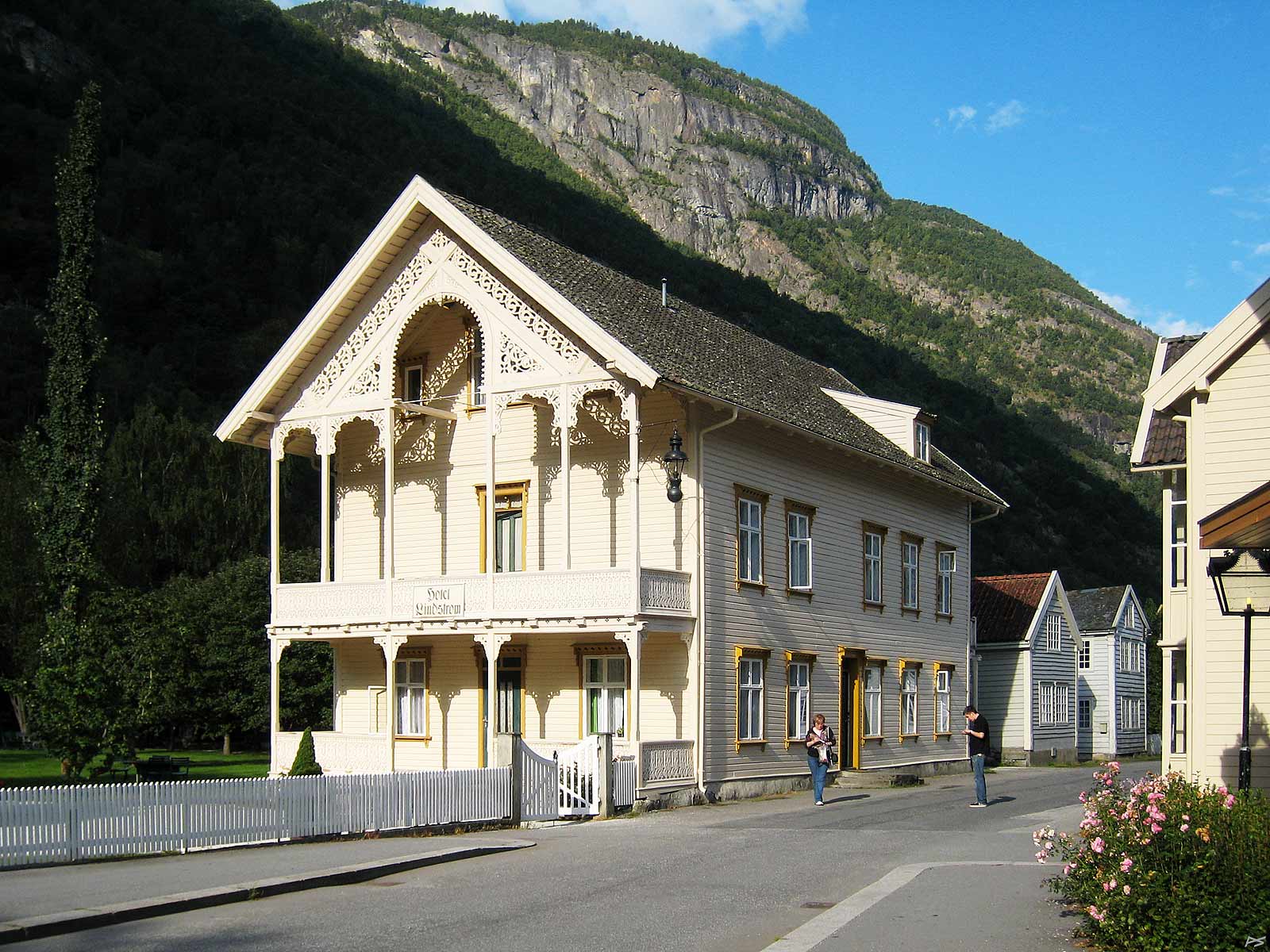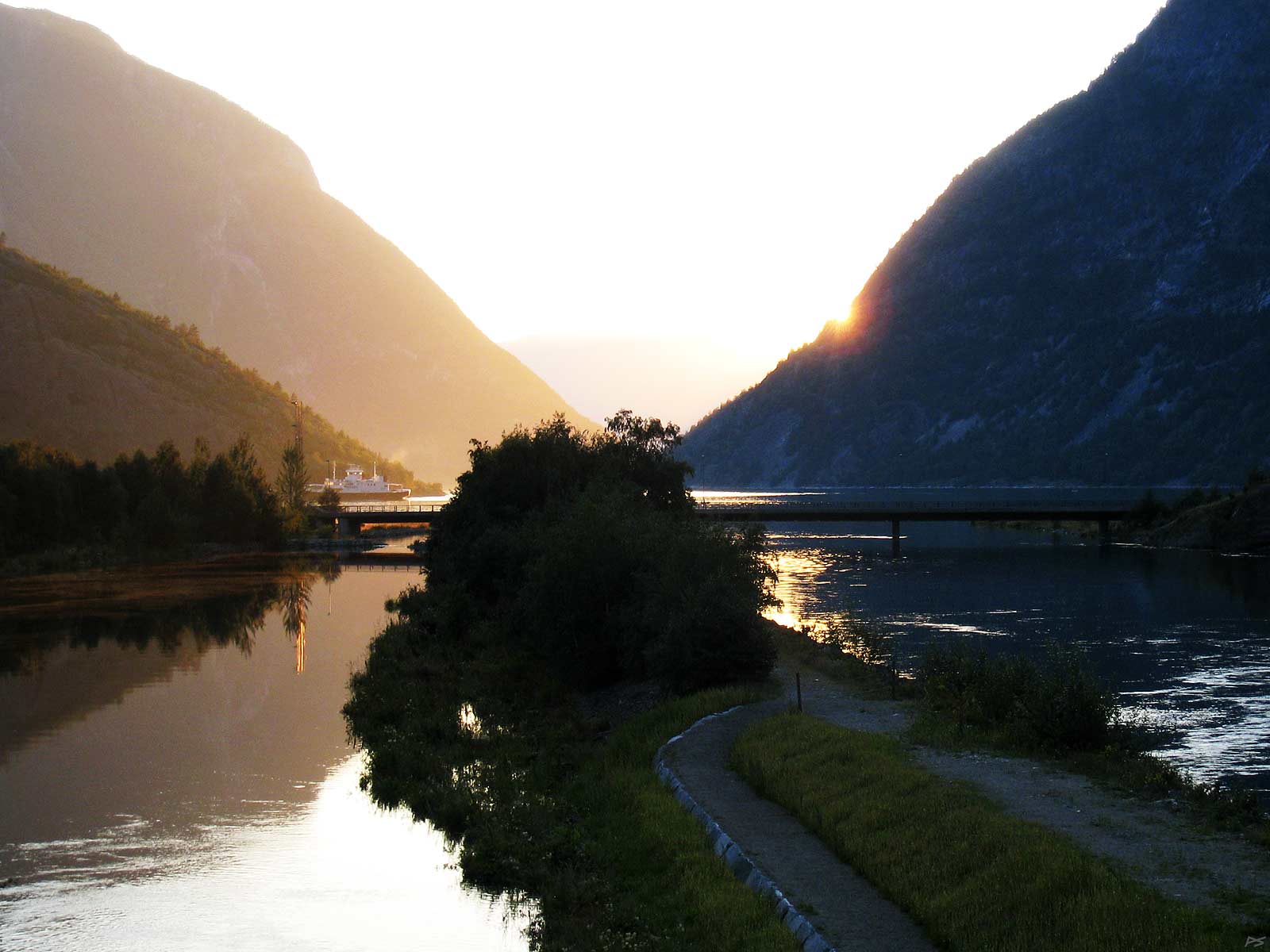at the inner end of Sognefjorden

Old houses on Lærdalsøyri in the evening, viewed across an elongated lagoon that once was the river outlet. An "ør/øyr" is the flat land (delta) where a river flows into the sea. Most of these places have been centres of human activities for hundreds or even thousands of years, and many still have picturesque houses and narrow streets. Lærdalsøyri is one of the most interesting places in this respect. The oldest houses are from the seventeenth century. 161 of them are registered as worthy of preservation and some are protected by law. A couple former and one of the latter were destroyed by a large fire 18–19 January 2014 (but none of those shown in my pictures). Fires are the reason why such old wooden house towns or villages are rare.
(2007-08-09)

From the old Lærdalsøyri – in the morning.
(2007-08-10)

The old hotel
(2007-08-10)

Hide-and-seek – the sun doesn't go down, it hides. In summer the shadow appears on the north side of Lærdalsøyri and moves very slowly to the south side. You can easily walk ahead of the shadow – and have a beer, a cup of coffee, or whatever on the way – till you reach the steep valley side where continuing isn't advisable.
Lærdalsøyri is situated near the inner end of our longest and deepest fjord, Sognefjorden. This is the next longest fjord in the world, 203 km long and 1308 metres deep. (Scoresby Sound on Greenland is a true fjord 350 km long, but its inner end is rather inhospitable.) This is actually the inner end of Lærdals-fjorden, a branch of Sogne-fjorden. To the left a ferry is arriving and to the right is the mouth of the Lærdal river. This river has been famous for its salmon fishing. In Lærdalsøyri you'll also find the "Norwegian Wild Salmon Center" where you can learn everything about salmon. Seven kilometres away is the northeast entrance to the world's longest road tunnel, Lærdalstunnelen.
(2007-08-09)

The Lærdal coat of arms shows two dragon heads from the Borgund stave church
